Iwo Jima.
This is probably the image that comes to your mind when you think of that small island in the middle of the Pacific Ocean:
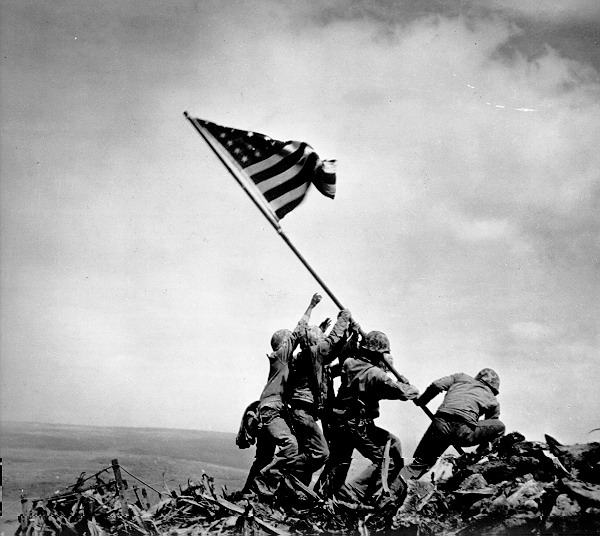
Now, imagine this (the rest of the story):
The date was 18 February 1945, D-Day to capture the critical island of Iwo Jima. This was the next island in line for the “island hopping” campaign for the United States in the Pacific Theater of Operations during World War II. There had already been three days of constant naval and aerial bombardment to “soften” the defenses of the island of Iwo Jima.
These assaults barely scratched the surface.
The invasion force was 70,647 US Marines. They faced 21,000 Japanese forces well entrenched in an intricate network of underground tunnels. The invasion force included a total of 250,000 US forces. They were carried on one of the largest armadas ever assembled, which included more than 800 vessels (12 aircraft carriers, 8 battleships and a host of other support vessels).
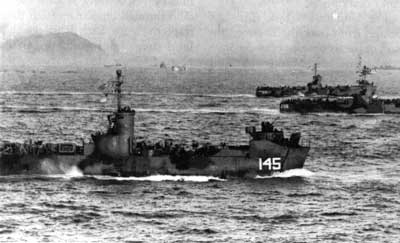
There was a 2 mile stretch of beach that was the only viable landing location. The American planners knew that and the Japanese defenders knew that. So, those 70,000 Marines came in to an area that was incredibly well defended and further complicated by soft, black volcanic beaches. So, the first wave got bogged down as they came ashore, then 5 minutes later another group was right on their heels, and another after that, and another, and so on. However, for the first hour, the Marines only encountered relatively light resistance. This is not what they were expecting. Once the beach had become congested though, the Japanese defenders opened up and decimated the men and equipment on the beach while remaining seemingly invisible from their underground or concealed emplacements. A book (Iwo Jima: Legacy of Valor) by Bill Ross described it as, “mortars fell cascades from hundreds of concealed pits. Heavy artillery and rapid-firing antiaircraft guns, barrels lowered to rake the beaches, slammed shells into oncoming landing craft and support vessels. Land mines sown like wheat in a field, exploded in sickening blasts as Marines stumbled across them. Fifteen inch guns and large mortars rained down from Suribachi’s base, slopes and crater … 6,200 men were down on the 3,000-yard strip of land.”
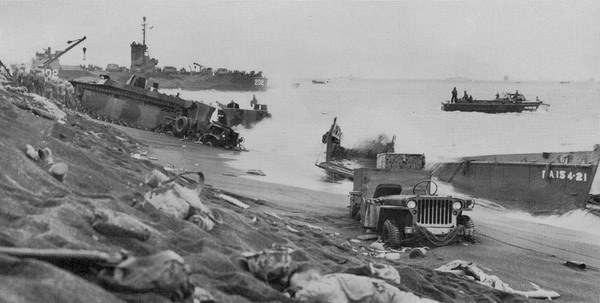
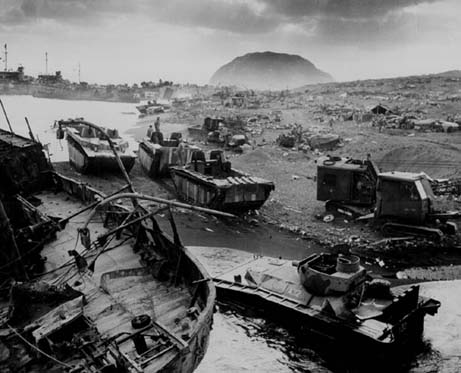
Eventually, the Marines broke free and began to advance inland in force.
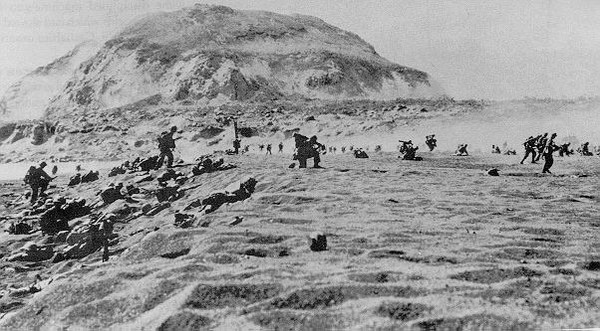
Although the island is less than 8 square miles, it has a formidable natural fortress in the form of Mount Suribachi (A suribachi is a kind of rough grinding bowl. Apparently the mountain’s shape was reminiscent of a suribachi to the Japanese who named it) on the extreme southern end of the island.
On the third day of fighting on Iwo Jima (D+2), the Marines launched their coordinated attack on Mt Suribachi. However, in some places they only advanced 50 yards that day.
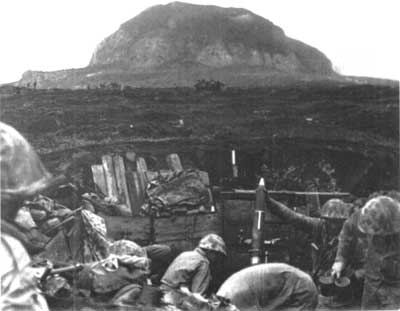
D+3 brought much of the same. There was no room for the supporting tanks and artillery to maneuver and the battle lines were so close that air support was ineffective. The battle raged with the marines fighting above ground and the Japanese fighting below. Many times, the US forces would never see their adversary as they were so well hidden. The most effective tactic was to use flame throwers and hand grenades.
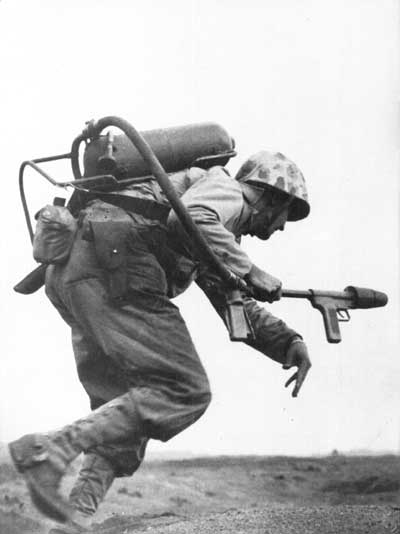

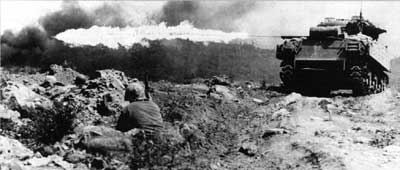
Finally on D+4 (24 February 1945), a forty man patrol was sent out and moved up the northern slopes toward the summit. They engaged a number of Japanese soldiers who attacked with hand grenades, but at 10:30 AM, the stars and stripes were raised on a length of pipe.
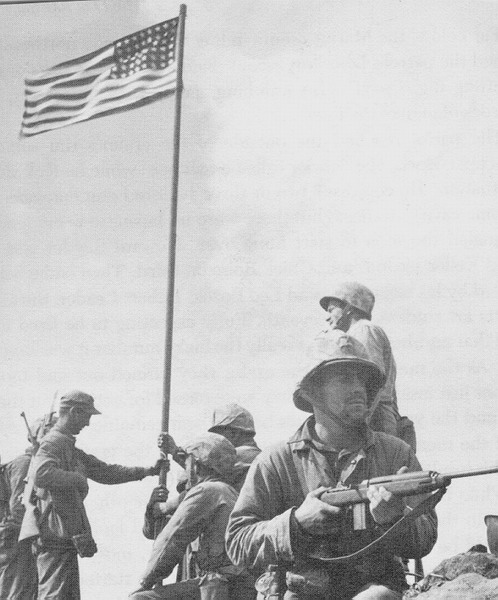
Photographer Lou Lowery captured this first flag raising on Iwo Jima on film. The shout went out throughout the southern part of the island “the flag is up!” and the troops cheered while the naval vessels sounded their siren. Around noon, the small flag first raised was replaced by a much larger one. These flag raisers are the ones that photographer Joe Rosenthal forever immortalized in his famous picture. This has become one of the most recognized pictures of the whole war. When asked 10 years later about the picture, he commented. “what difference does it make who took the picture, I took it, but the Marines took Iwo Jima.”
Here is a picture shortly after Old Glory was raised:

While the Marines were justifiably happy, the battle was far from over. The final “organized” attack occurred on 26 March 1945 (36 days after fighting began). 262 Japanese and 53 Americans were killed and at 0800, the island was declared captured.
This, over an island that is 5 miles long and averages only a mile and a half wide. The casualties were almost unbelievable. There were almost 7,000 American killed in the capture of Iwo Jima (of that 6,000 were Marines). Of the 21,000 Japanese defenders, 20,000 were killed and 1,083 were taken prisoner. There were 22 Medals of Honor awarded to Marines and 27 total were awarded, although 13 were posthumous (this is more than 25% of Marine Medals of Honor in all of WWII). The strategic value of the island is significant. Since the island is about halfway between the Marianas Islands and mainland Japan, it was an effective divert base for the many heavy bombers attacking Japan and a base for the shorter range fighters to escort the bombers. By the end of the war, more than 2,400 emergency landings were made at Iwo Jima. That meant that 27,000 men in those B-29s didn’t have to ditch their planes at sea (or worse) and prompted US Navy Admiral Ernest King to state that the lives saved “exceeded lives lost in the capture of the island itself.”
An interesting side note:
The man who led the Japanese defense of Iwo Jima was Lieutenant General Kuribayashi. He had lived and studied in the US during the 1920s and was later an assistant Defense Attaché before WWII. He wrote to his son and said, ” The United States is he last country in the world that Japan should fight. Its industrial potentiality is huge and fabulous, and the people are energetic and versatile. One must never underestimate the American’s fighting ability.” However, he led his forces in an effective, bitter fight to the end. His orders to his men were: don’t expect to survive the battle and to take out 10 Americans before they themselves were killed.
Here is the general:
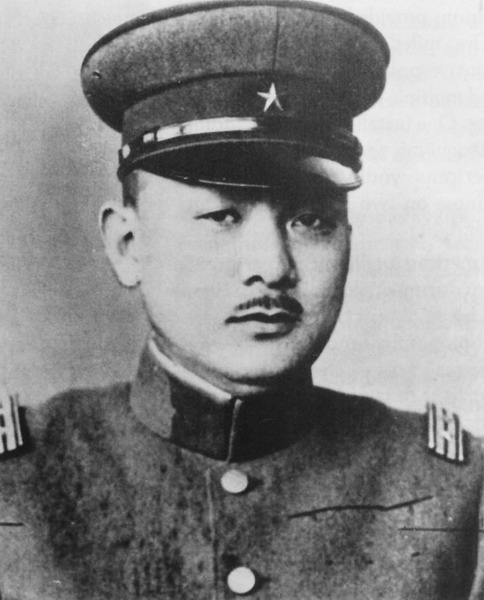
My thanks to the base historian and our Marine guide who educated me on the history which I just shared with you all (and provided the reference material from which to draw upon).
The next entry will discuss our trip to this historic island.
–Jim
1 thought on “Iwo Jima: 1945”
Comments are closed.

Good Stuff!